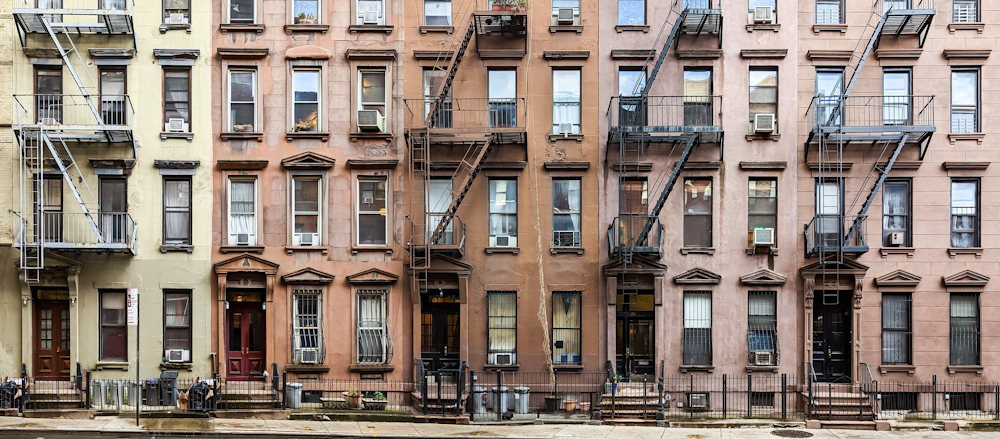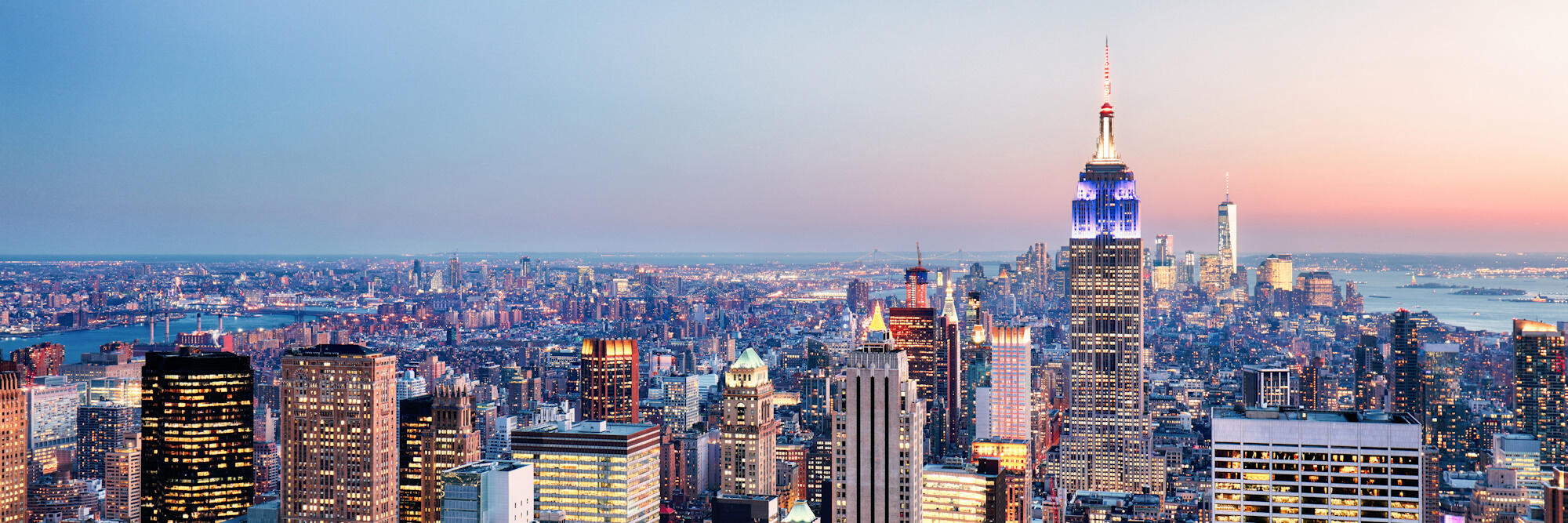- Download our New York City Schools Guide
- Download our Moving to New York City Guide (PDF)
If you’re hunting for accommodation in New York City, prepare yourself for an adrenaline-driven experience marked by fierce competition.
In general, buying, renting or finding any type of housing can be difficult and expensive. Start your search as soon as possible to give yourself the best chance of securing a suitable place.
Areas and suburbs in New York City
New York City is separated into five distinct neighbourhoods or boroughs – Manhattan, Brooklyn, Queens, Staten Island and the Bronx. Manhattan is the central borough accessible by bridge or tunnel, while the others are the outer boroughs. Although you might prefer to live close to your workplace, the main business district of Manhattan claims the most expensive real estate and has few options for family-sized accommodation.
Even neighbouring boroughs outside Manhattan – like Brooklyn and Queens – have started advertising rentals with sky-high prices, although properties here usually offer more space than you would find in the centre of New York. Queens has actually overtaken Brooklyn as the most competitive rental market, with rising demand and limited inventory driving fierce competition. Striking a balance between location, type of accommodation, and affordability can be tricky.
The neighbourhoods in New York City are as diverse and distinct as the city’s cultural makeup. Young professionals and students typically lean towards trendy Downtown and Midtown New York City, where there are unique cultural and dining experiences on offer.
Uptown New York, Park Slope and Brooklyn Heights in Brooklyn, and Westchester County are all popular with families of all sizes, thanks to the abundance of green spaces and family-friendly housing in these areas. These areas also have suburbs with some of the best public and international schools in New York City.
See Areas and Suburbs in New York City for more details on the best neighbourhoods in the city.
Types of accommodation in New York City

There are numerous housing options in New York City. Anyone moving to the Big Apple is sure to find something that suits them – provided their budget allows it. Below is a breakdown of the types of property available in New York City.
Walk-up buildings are three- to six-storey buildings constructed in the early 20th century with no lift. Most lack laundry facilities and have basic security via locked double doors with intercoms. Brownstones are single-family homes built with brown sandstone in the early 20th century. The main entrance is typically half a storey below street level, and the ground level may have a garden behind the house.
Pre-war buildings were constructed before World War II and are known for their quality craftsmanship and architectural splendour. Some still employ a lift operator and may provide a doorman and laundry facilities. Post-war buildings refer to anything built from the late 1940s to the mid-1970s. Almost all have lifts and laundry facilities, many have doormen, and they typically feature larger windows.
Townhouses were built as upscale private homes and offer house-like amenities such as private backyards, terraces, and fireplaces. They’re mostly found in the suburbs, away from downtown New York.
New buildings are usually less than 10 years old and tend to be quite luxurious, often featuring marble bathrooms and granite kitchens. Many are high-rises with amenities including health clubs, swimming pools, and parking facilities.
Finding accommodation in New York City

The rental market in New York City changed significantly in June 2025 with the FARE Act, which prohibits brokers hired by landlords from charging fees to tenants. You can still hire your own broker if you want assistance, but you’re no longer required to pay for landlords’ brokers. Before this law, broker fees typically ranged from one month’s rent to 15 percent of annual rent.
Since the FARE Act took effect in June 2025, landlords must pay their own brokers’ fees. If a broker asks you to pay a fee for a property they’re marketing on behalf of a landlord, this violates the law and can be reported to the Department of Consumer and Worker Protection.
If you’re young and single, you might consider sharing an apartment in New York. This is not only a great way to save money, but also allows you to meet people and create a larger social circle. Online property portals such as Zillow, Trulia, and StreetEasy are a fantastic way to find rental listings and house- or flat-share options. Other popular platforms include RentHop, PadMapper, and Craigslist. Many people also use Facebook groups and Reddit communities like r/NYCapartments for both apartment hunting and finding roommates.
Useful links
- StreetEasy: NYC Apartment Listings
- RentHop: NYC Rental Search
- PadMapper: Map-Based Apartment Search NYC
- Reddit: r/NYCapartments Community
Renting accommodation in New York City
When renting accommodation in New York City, commute time is another important consideration in choosing a location. The city has extensive public transport, but there are still a few noteworthy limiting factors. Subways can be crowded, and re-routing is a common occurrence, especially on weekends. On the other hand, commuting into the city by car will result in up to an hour’s wait to get through the main tunnels during rush hour, and parking is either impossible to find or exorbitantly priced.
Making an application
Be ready to prove your financial capacity with pay stubs, bank statements, income tax returns, a letter of employment and a refundable security deposit, among others. Some landlords will also require a reference from a previous landlord. A credit check will also be conducted – if you’ve recently relocated to the US, you won’t yet have a credit history in the country and may instead need to provide a personal or institutional guarantor. For guarantors, landlords typically require someone with proof of annual income that is 80 to 100 times the monthly rent, along with their tax returns, credit report, and identification.
Leases and deposits
By law, the deposit is limited to one month’s worth of rent and must be returned within 14 days of the end of the lease. You will also need to pay the first month of rent upfront. If you used an agency, make sure to have some funds set aside to cover the cost of fees.
A typical lease is for 12 months. For lease renewals, landlords must give written notice between 90 and 150 days before the lease expires. The notice period for non-renewal depends on how long you’ve lived in the apartment: 30 days if you’ve lived there less than one year, 60 days if one to two years, and 90 days if more than two years. It’s possible but difficult to find shorter-term leases in the city. They also tend to be more expensive as they are generally fully serviced and include utilities in the rental amount.
Terminating the lease
If you need to terminate your lease early, you’re generally responsible for the remaining rent unless you have legal grounds such as military deployment, domestic violence, or if the apartment becomes uninhabitable. Some leases include early termination clauses that allow you to break the lease for a fee. You must give written notice to your landlord and may be responsible for costs to re-rent the unit. Since April 2024, New York’s Good Cause Eviction Law has provided additional protections against unreasonable evictions and excessive rent increases for many market-rate tenants.
See Accommodation in the USA for more information on rental processes in the country.
Utilities in New York City
The inclusion of utilities such as heat, electricity and water in the rental price will vary according to different lease agreements. Gas and water are typically included in the rental price, so in most cases, you will only need to pay for electricity and internet.

Electricity
Con Edison is the main electricity provider across all five boroughs of New York City. Setting up electricity service involves providing your full name, contact information, address, and social security number to open a new account. As a new customer, you may need to pay a security deposit, which is usually returned after a year of consistent payments. You can set up automatic monthly payments via direct debit from your bank account.
Gas
Natural gas service is split between two main providers in NYC: Con Edison serves Manhattan and the Bronx, while National Grid covers Brooklyn, Staten Island, and most of Queens. Gas is typically included in your rental price, but if not, you’ll follow similar setup procedures to electricity, with identification and deposit requirements.
Water
New York City’s Department of Environmental Protection (DEP) provides water service citywide. NYC tap water is safe to drink and meets all federal and state quality standards. It is sourced from upstate reservoirs, including the Croton, Catskill, and Delaware systems. Water is typically included in your rental agreement, but if you need to set up service, contact NYC DEP directly.
Bins and recycling
NYC operates a dual-stream recycling system managed by the Department of Sanitation. Blue bins are for metal, glass, cartons and plastic, while green bins are for paper and cardboard. As of November 2024, residential properties with nine units or fewer must use secure containers with lids for rubbish collection. You can use any compliant bin or purchase the official NYC Bin.
